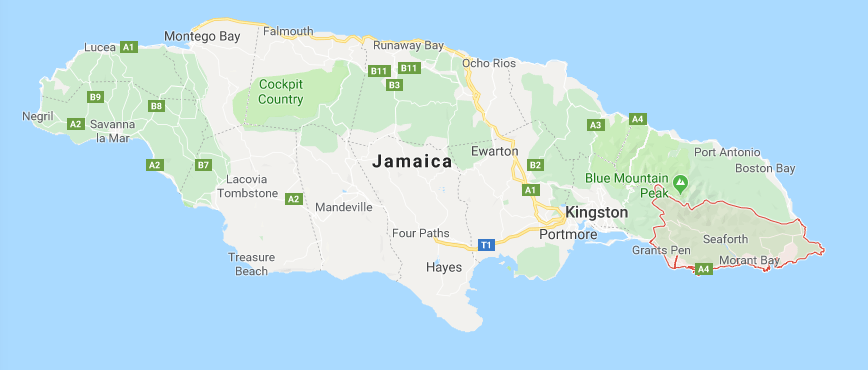
St. Thomas, one of fourteen parishes in Jamaica, is situated at the southeastern end of the island. Its natural beauty is breathtaking as one looks northward to the John Crow and Blue Mountains. It has the only natural harbor in the Caribbean from which sugar and banana were shipped to European and American ports. St. Thomas boasts one of the longest rivers in Jamaica, the Plantain Garden River that flows easterly from the mountains for 22 miles. The district (town) of Bath is the site of the first breadfruit tree brought to the island by Captain William Bligh from the island of Tahiti. Breadfruit is a staple in the Jamaican diet. Bath also has a mineral spring that is a major attraction for both tourists from abroad and other parts of Jamaica.
Despite St. Thomas’ proximity to the capital, Kingston, it is the poorest parish on the island. With a population of approximately 95,000 of whom 50% are under the age of 29, it has a high unemployment currently hovering around 30%. The poverty rate has more than doubled in the last 10 years to 33%. At the current annual rate of growth, by 2027 more than 60% of the St. Thomas populace will live in poverty.
Years of neglect, unfulfilled promises, and polarization have decimated the parish. Roads are in disrepair, major employers like the Goodyear Tire Factory and Serge Island Sugar Estate have moved out or closed, and the Serge Island Diary and the Jamaica Sugar Estate in Duckenfield will soon close. The parish once boasted two hospitals, the Princess Margaret Hospital and the Isaac Barrant Hospital. The Princess Margaret Hospital is still in existence but often lacks the supplies to provide decent medical care. With six high schools and despite the success of some of its students, the parish does not produce an equipped and competitive labor force. Often called the Garden of Eden, agriculture no longer sustains St. Thomas.
